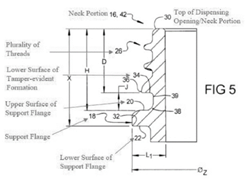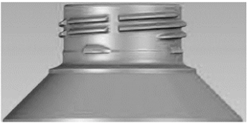The US Court of Appeals for the Fourth Circuit joined the Third and Eleventh Circuits in ruling that the re-registration of an infringing domain name with a bad faith intent to profit violates the Anti-Cybersquatting Consumer Protection Act (ACPA). Prudential Ins. Co. of Am. v. Shenzhen Stone Network Info. Ltd., Case No. 21-1823 (4th Cir. Jan. 24, 2023) (Diaz, Thacker, Floyd, JJ.)
The ACPA, 15 U.S.C. § 1125(d), protects trademark owners from cybersquatters that register, traffic in, or use a domain name “identical or confusingly similar to or dilutive of” a distinctive or famous mark with the “bad faith intent to profit.” The ACPA jurisdictional requirement states that a trademark owner may either establish that a court has in personam jurisdiction over the defendant or, if personal jurisdiction cannot be established, bring an in rem action against the domain name.
Prudential Insurance Company of America’s trademark portfolio includes the term PRU and other PRU-formative marks. Shenzhen Stone Network Information (SSN) acquired the domain name PRU.COM from an online domain name marketplace, which leads to a parked page containing advertisements displaying Prudential’s trademarks and the marks of Prudential’s competitors. Prudential attempted to acquire the PRU.COM domain name twice—once through a domain name brokerage service and once after filing a Uniform Domain Name Dispute Resolution Policy (UDRP) administrative action with the World Intellectual Property Organization (WIPO). SSN rejected both offers. SSN claimed that it planned to develop the website into a foreign exchange and economic news platform, but it never substantively altered the parked page. Prudential subsequently dismissed the UDRP action and filed suit in the Eastern District of Virginia alleging cybersquatting and infringement against the CEO of SSN, Zhang (in personam), and PRU.COM (in rem). Zhang moved to dismiss the action or transfer it to the District of Arizona for lack of personal jurisdiction and in rem jurisdiction. The district court held that although it lacked personal jurisdiction over Zhang, in rem jurisdiction was appropriate at the time the complaint was filed. The district court then dismissed Prudential’s trademark infringement claim as moot, granted summary judgment to Prudential on its cybersquatting claim and ordered SSN to transfer the PRU.COM domain name. SSN timely appealed to the Fourth Circuit.
The Fourth Circuit, reviewing the district court ruling de novo, affirmed. As an initial matter, the Court held that the district court had proper in rem jurisdiction over the PRU.COM domain name because Zhang, as a corporate officer of SSN, lacked standing to defend SSN’s property interests and the domain name registry was located in Virginia. Moreover, in rem jurisdiction is assessed at the time the complaint is filed and cannot be destroyed during the pendency of the case if a proper defendant is later revealed.
Regarding the ACPA claim, SSN argued that since the initial domain name registrant registered PRU.COM in good faith, SSN, as a re-registrant, is not subject to the ACPA. The Fourth Circuit joined the Third and Eleventh Circuits in holding that the term “registration” in the ACPA is [...]
Continue Reading
read more


 Subscribe
Subscribe




